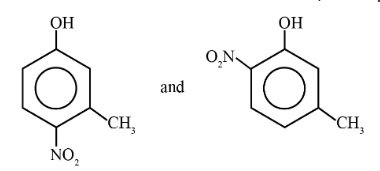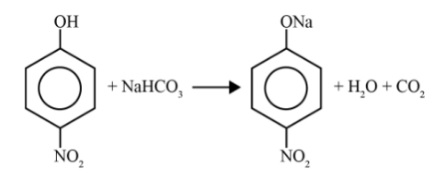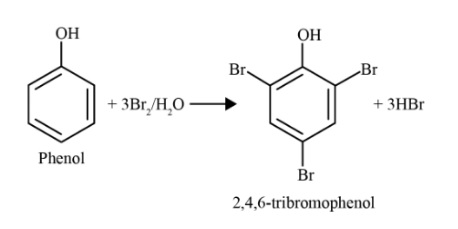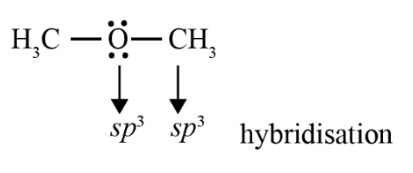Revision Notes for CBSE Class 12 Chemistry Chapter 11 (Alcohols, Phenols and Ethers) - Free PDF Download





























FAQs on Alcohols, Phenols and Ethers Class 12 Notes CBSE Chemistry Chapter 11(Free PDF Download)
1. What are the important Topics Covered in Class 12 Chemistry Revision Notes for Chapter 11- Alcohols, Phenols, and Ethers?
The important topics covered in Class 12 Chemistry Revision Notes for Chapter 11- Alcohols, Phenols, and Ethers are as follows.
Classification of Alcohols, Ethers
Structures of Functional Groups
Physical Properties
Preparation of Alcohols
Reactions of Alcohols
Preparation of Phenols
Ethers
Reaction of Ethers
Preparation of Epoxides
Reactions of Epoxides
Acidic Strength
Tests for Alcohols, Phenols, and Ethers
Every topic and sub-topic of this chapter is discussed in detail along with the chemical reactions in these revision notes. Students are suggested to learn all the topics thoroughly to lay a strong foundation of these topics.
2. Is Class 12 Chemistry Chapter 11- Alcohols, Phenols, and Ethers important for the IIT JEE Entrance Exam?
Yes, Class 12 Chemistry Chapter 11- Alcohols, Phenols, and Ethers is very important for the IITJEE entrance exam. Students should learn the properties of alcohols, phenols, and ethers and practice the chemical reactions given in this chapter properly so that they can answer the conceptual and application-based questions in the IITJEE exam from this chapter.
3. Define Alcohol, Phenol, and Ether?
Alcohol, phenol, and ether, all three are organic compounds.
Alcohol: It is an organic compound in which a hydroxyl group is bonded to a saturated carbon atom.
Phenol: It is an organic compound in which a hydrogen atom is replaced by -OH group in a benzene molecule.
Ether: It is an organic compound in which two aryl or alkyl groups are bonded to an oxygen atom.
4. Differentiate between Alcohols and Phenols?
The differences between phenol and alcohol are as follows.
In alcohols, one or more hydroxyl group is bonded to a saturated carbon atom. In phenols, a hydroxyl group is bonded to an aromatic system of hydrocarbon.
Alcohols are liquids at STP, whereas, phenols are crystalline solids at STP. Both alcohols and phenols are colourless in nature.
Alcohols contain aliphatic hydrocarbons whereas, phenols comprise aromatic hydrocarbons.
Alcohols are comparatively less acidic than phenols. Since phenols are more acidic than alcohols, they are diluted while using.
On testing with litmus paper, alcohols do not show any colour change, whereas, phenols turn blue litmus paper red due to their acidic nature.
Alcohols are predominantly used in beverages, pharma, and ink industries, whereas, phenols are used as antiseptic agents and in various medicinal products.
5. What are alcohol phenol and ether?
Chapter 11 of Class 12 Chemistry briefly discusses alcohol, phenol, and ether which are classes of organic compounds. The compound alcohol is formed when an atom of saturated carbon is bonded with an atom of the hydroxyl (-OH) group. Phenol can be formed when an atom of hydrogen in a benzene molecule is replaced by the -OH group. Ether is formed when an atom of oxygen is connected to two aryl or alkyl groups.
6. What are the uses of alcohol phenol and ether?
Ethers are used as solvents for fats, oils, waxes, resins, dyers, gums, etc.
Alcohol is an important ingredient in alcoholic beverages. They are also used in ink, pharma, ink, and other industries.
Phenols are prominently used in medicinal products as antiseptic agents.
Alcohols, phenols, and ether are essential compounds used in the making of detergents, antiseptics, and fragrances. You can find more examples in NCERT for alcohol phenol and ether and why they are used. You can also download NCERT Solutions from Vedantu’s official site (vedantu.com) or the app.
7. How do NCERT Solutions help learn Chapter 11 of Class 12 Chemistry?
The aim behind curating these NCERT Solutions is to create study material that is helpful for the students and easy to learn. Chapter 11 is an important chapter from the board examination point of view and NCERT solutions help you to understand the fundamental concepts. This chapter is also important for entrance exams and competitive exams such as JEE mains, JEE advance, etc. Thus, it makes memorizing that chapter more necessary. These solutions convert complex terms and concepts into simple language that is easy to memorize.
8. Where can I find the NCERT Solutions for Chapter 11 of Class 12 Chemistry?
NCERT Solutions for Chapter 11 are available on the internet at Vedantu’s official site (vedantu.com) free of cost. You can find NCERT Solutions related to Chapter 11 along with the important questions, extra questions to practice, examples for various compounds, MCQs, the meaning of difficult terms, quizzes, assignments, etc. You can also download Vedantu’s learning app for some educational videos to understand the concepts of organic compounds.
9. Is it necessary to learn diagrams of Chapter 11 of Class 12 Chemistry?
The diagrams in Chapter 11 are necessary as they help to understand the addition and subtraction of the compounds. The diagrams are also important to have a visual representation of the configuration of the atoms and compounds that are invisible to human beings. Visual representation helps students to remember the concepts for a longer period. The diagrams in Chapter 11 are also important from an examination point of view. Adding these diagrams to your answers will improve your chances to score high marks in your board examinations as well.








